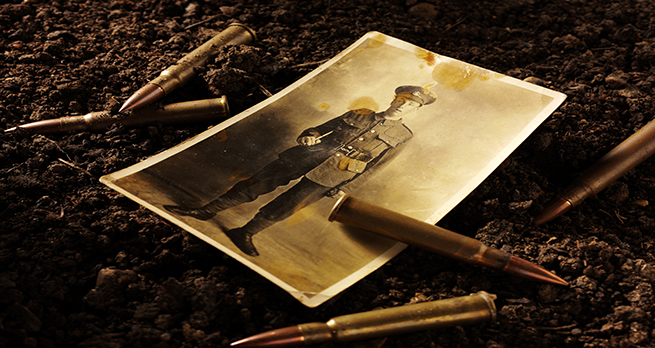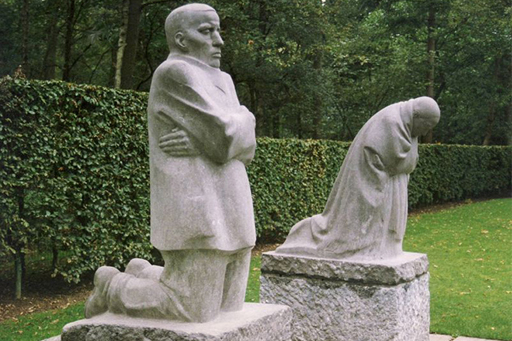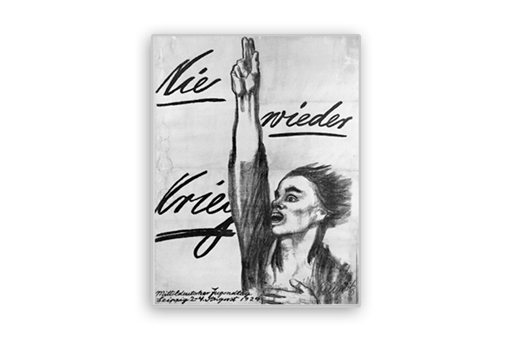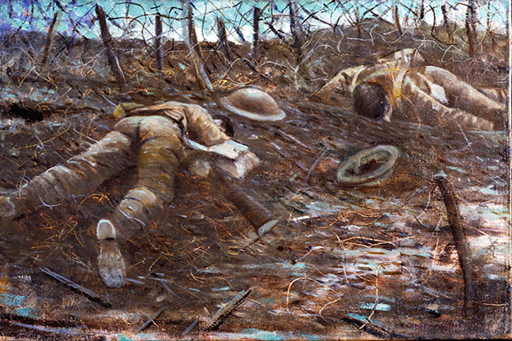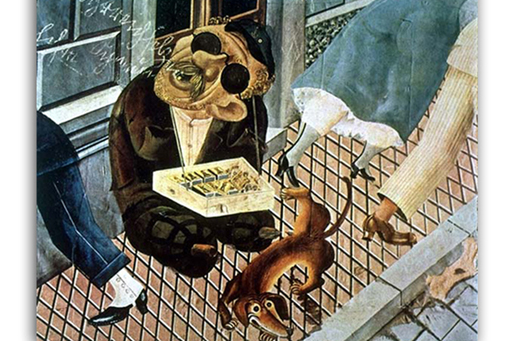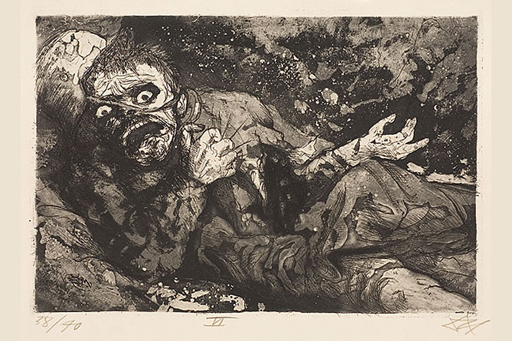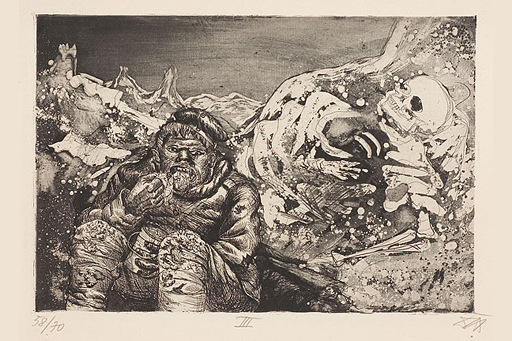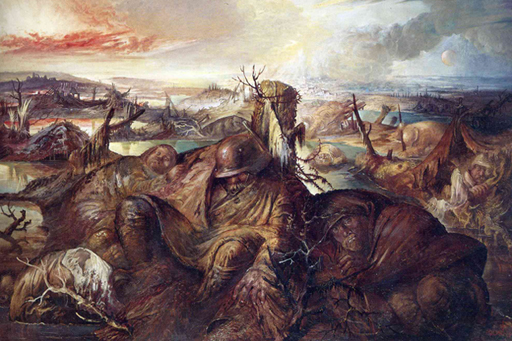3.1.4 Reactions: trauma, grief and disgust in art
Grief was also a frequent motif for artists.
The German artist Käthe Kollwitz lost her only son in 1917, and was subsumed by grief, which poured out in her sculptures, drawings and paintings. Her sculpture, ‘The Grieving Parents’, can be found in Vladslo German war cemetery in Belgium. Grief was a recurring theme in her artwork, and it expressed the suffering of millions of parents in Germany.
Kollwitz’s strong anti-war message has had an enduring quality and it is not surprising that, in 2014, to commemorate the centenary of the outbreak of the war, the German post office commissioned just one stamp depicting a Käthe Kollwitz image, with the caption: ‘Nie wieder Krieg’ – never again war.
Other artists also took the trauma of war as their recurring motifs. The British painter, C. R. W. Nevinson, despite being commissioned as an official war artist, did not flinch from depicting the carnage of the battlefield.
Similarly, the German painter Otto Dix produced startling images detailing the horrors of war. He also dealt with the aftermath of the war, and his paintings featured physically and mentally damaged soldiers in stark, often ridiculous, poses and situations, as a critique of post-war attitudes towards the suffering of former soldiers. His painting The Match Seller (below), for example, illustrates the pitiful fate that many veterans were subjected to after the war.
After the Nazi seizure of power in 1933, images such as these were considered unpatriotic and labelled ‘degenerate art’.
